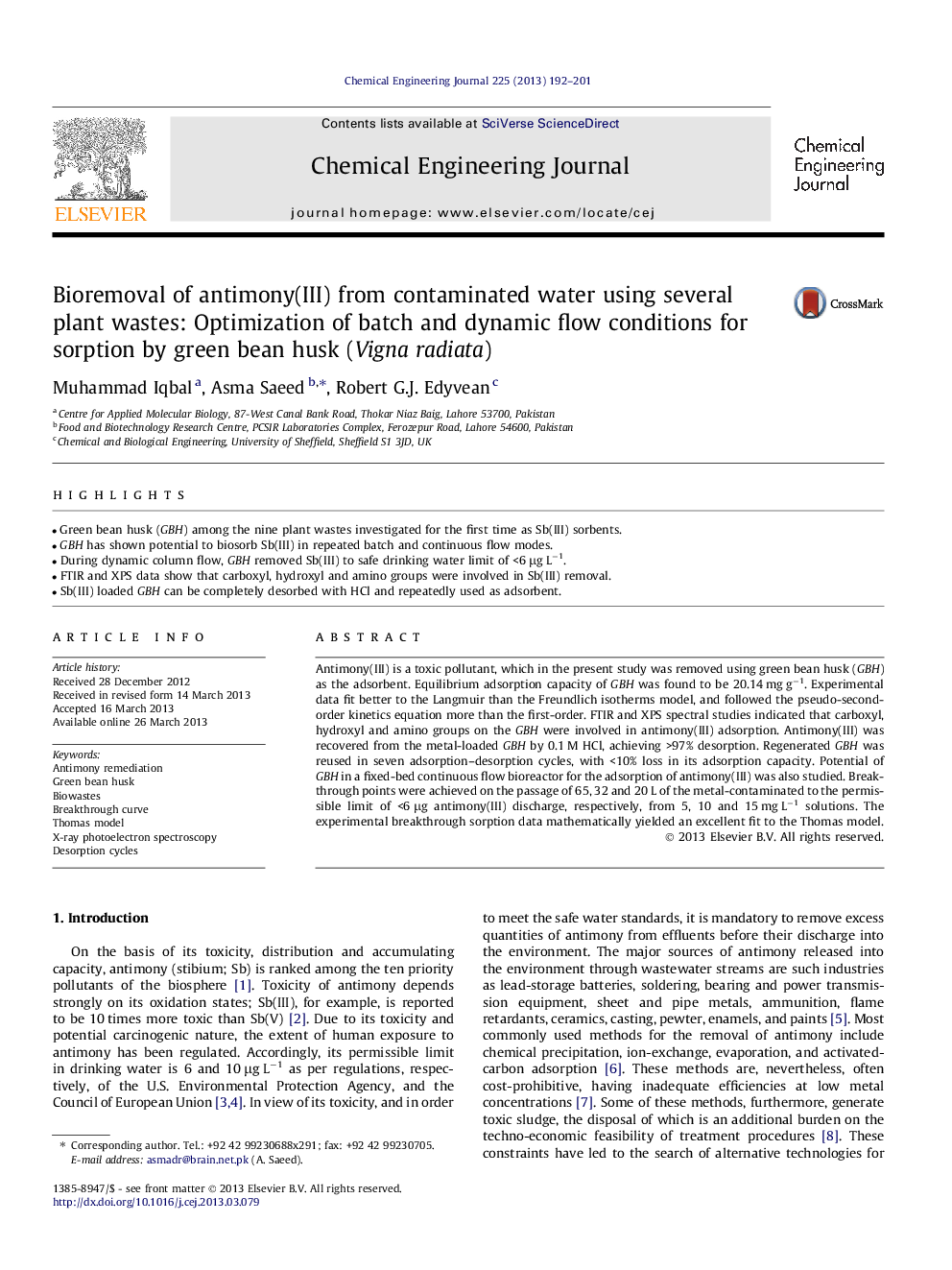| کد مقاله | کد نشریه | سال انتشار | مقاله انگلیسی | نسخه تمام متن |
|---|---|---|---|---|
| 148672 | 456421 | 2013 | 10 صفحه PDF | دانلود رایگان |

• Green bean husk (GBH) among the nine plant wastes investigated for the first time as Sb(III) sorbents.
• GBH has shown potential to biosorb Sb(III) in repeated batch and continuous flow modes.
• During dynamic column flow, GBH removed Sb(III) to safe drinking water limit of <6 μg L−1.
• FTIR and XPS data show that carboxyl, hydroxyl and amino groups were involved in Sb(III) removal.
• Sb(III) loaded GBH can be completely desorbed with HCl and repeatedly used as adsorbent.
Antimony(III) is a toxic pollutant, which in the present study was removed using green bean husk (GBH) as the adsorbent. Equilibrium adsorption capacity of GBH was found to be 20.14 mg g−1. Experimental data fit better to the Langmuir than the Freundlich isotherms model, and followed the pseudo-second-order kinetics equation more than the first-order. FTIR and XPS spectral studies indicated that carboxyl, hydroxyl and amino groups on the GBH were involved in antimony(III) adsorption. Antimony(III) was recovered from the metal-loaded GBH by 0.1 M HCl, achieving >97% desorption. Regenerated GBH was reused in seven adsorption–desorption cycles, with <10% loss in its adsorption capacity. Potential of GBH in a fixed-bed continuous flow bioreactor for the adsorption of antimony(III) was also studied. Breakthrough points were achieved on the passage of 65, 32 and 20 L of the metal-contaminated to the permissible limit of <6 μg antimony(III) discharge, respectively, from 5, 10 and 15 mg L−1 solutions. The experimental breakthrough sorption data mathematically yielded an excellent fit to the Thomas model.
Journal: Chemical Engineering Journal - Volume 225, 1 June 2013, Pages 192–201